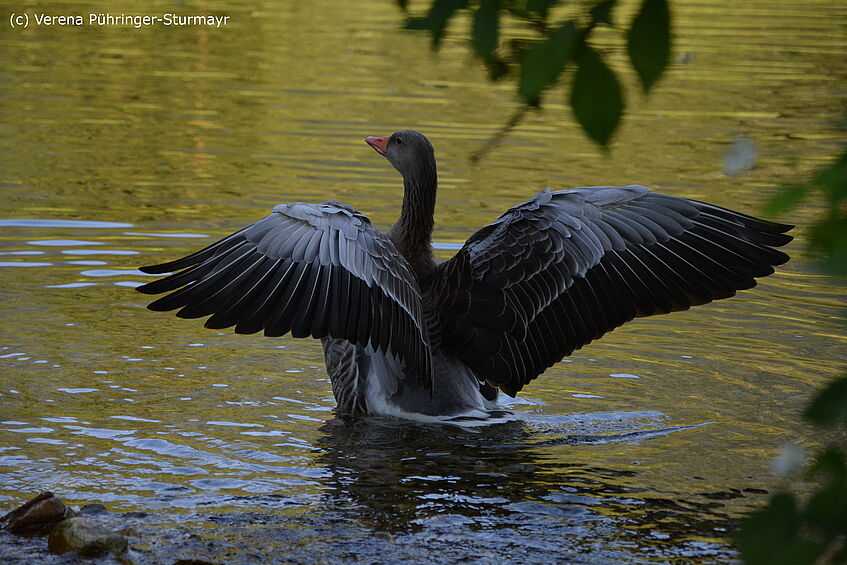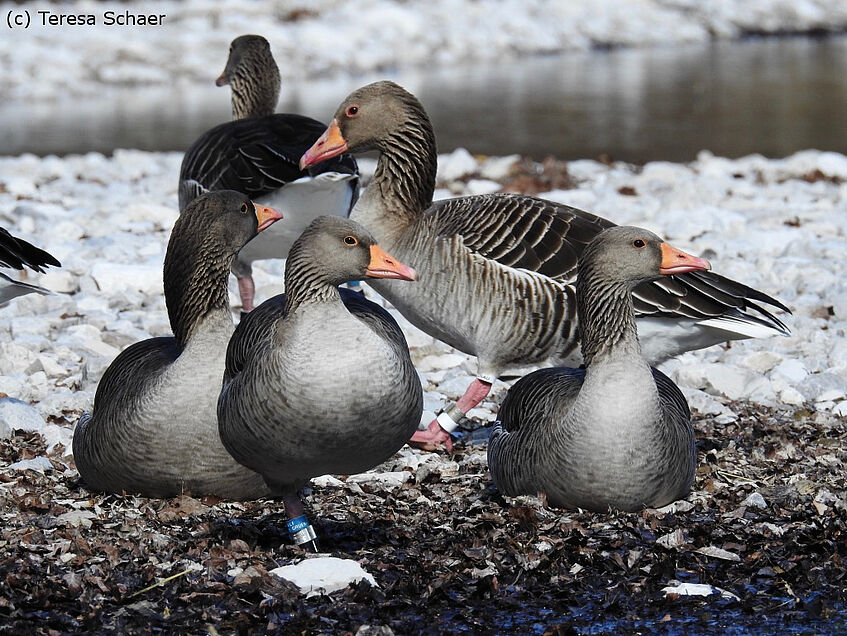Greylag geese

A non-migratory flock of semi-tame, yet unrestrained Greylag geese was introduced into the valley of the river Alm by Konrad Lorenz and co-workers in 1973. Over the years, the flock numbers between 120 to 180, individually marked birds. Social relationships between birds have been monitored ever since. Approximately 20% of the individuals are carefully hand-raised for scientific reasons, but integrate well into the flock and behave just like their goose-raised pals. With all this social history, this flock is a unique tool for research. The flock allows not only observations, but also experimental work. However, no matter what we do, we have to keep geese cooperative and must not threaten the integrity of the flock.

Greylag geese are highly social birds, which temporarily flock, but separate in pairs during reproduction. The basic social unit is the family, composed of a long-term monogamous pair and their offspring, which accompany them for one year and sometimes even longer. This provides broad opportunity for social learning. Particularly females seem to keep close contacts to some of their sisters even when adult. Highest in rank are generally families, intermediary are pairs and singles are at the lower end of the hierarchy. Thus, a mate is not only a partner for reproduction and parenting, but also a much needed social ally.

Individual geese may become older than 20 years. With luck, they may keep their first partner all these years. Geese pair between 2 and 3 years of age and usually start getting successful parents a few years later. However, as in most social animals, only a fraction of pairs is regularly successful in fledging young. One of our major interests is to explain why. There is a good chance, that a partner falls victim to a predator, such as a fox or a golden eagle, which is the main reason, that average pairbond duration is only 4.5 years. If females are in short supply, males usually engage in a pairbond with another male. These few spotlights should suffice to show, that geese are socially very complex.
